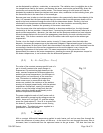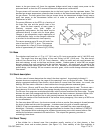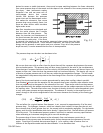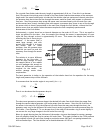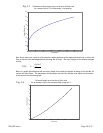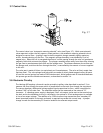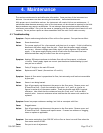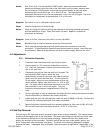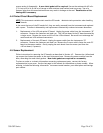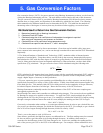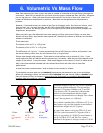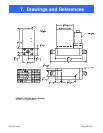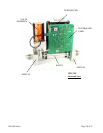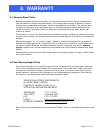
300-302 Series Page 27 of 31
6. Volumetric Vs Mass Flow
Mass flow measures just what it says, the mass or number of molecules of the gas flowing through the
instrument. Mass flow (or weight per unit time) units are given in pounds per hour (lb/hour), kilograms
per sec (kg/sec) etc. When your specifications state units of flow to be in mass units, there is no
reason to reference a temperature or pressure. Mass does not change based on temperature or
pressure.
However, if you need to see your results of gas flow in volumetric units, like liters per minute, cubic
feet per hour, etc. you must consider the fact that volume DOES change with temperature and
pressure. To do this, the density (grams/liter) of the gas must be known and this value changes with
temperature and pressure.
When you heat a gas, the molecules have more energy and they move around faster, so when they
bounce off each other, they become more spread out, therefore the volume is different for the same
number of molecules.
Think about this:
The density of Air at 0°C is 1.29 g/liter
The density of Air at 25°C is 1.19 g/liter
The difference is 0.1 g/liter. If you are measuring flows of 100 liters per minute, and you don’t use
the correct density factor then you will have an error of 10 g/minute!
Volume also changes with pressure. Think about a helium balloon with a volume of 1 liter. If you
could scuba dive with this balloon and the pressure on it increases. What do you think happens to the
weight of the helium? It stays the same. What would happen to the volume (1 liter)? It would shrink.
Why is the word standard included with the volume terms liters and cubic feet in mass flow
applications?
A mass flow meter measures mass …and we know we can convert to volume.
To use density we must pick one (or standard) temperature and pressure to use in our calculation.
When this calculation is done, the units are called standard liters per minute (SLM) or standard cubic
feet per minute (SCFM), for instance, because they are referenced to a standard temperature and
pressure when the volume is calculated.
0 °C
0.179 grams/1
liter
1 Liter
1.08 Liter 1 Liter
25 °C
0.164 grams
25 °C
0.179 g/1.08
liters
Using the example to the left, we can see a standard
liter can be defined differently. The first balloon
contains 0.179 grams of Helium at 0 °C and 760
Torr (density of 0.179 grams/liter). Heat up that
balloon to room temperature and the volume
increases, but the mass has not changed. The volume
is not 1 liter anymore, it is 1.08 liters.
So, to define a standard liter of Helium at 25 °C, we
must extract only one liter from the second balloon
and that liter weighs only 0.175 grams.
If a mass flow meter is set up for STP at 0 °C and
760 Torr, when it measures 0.179 grams of He, it
will give you results of 1 SLM. If a second meter is
set up for STP at 25 °C and 760 Torr, when it
measures 0.164 grams, it will give results of 1 SLM.



